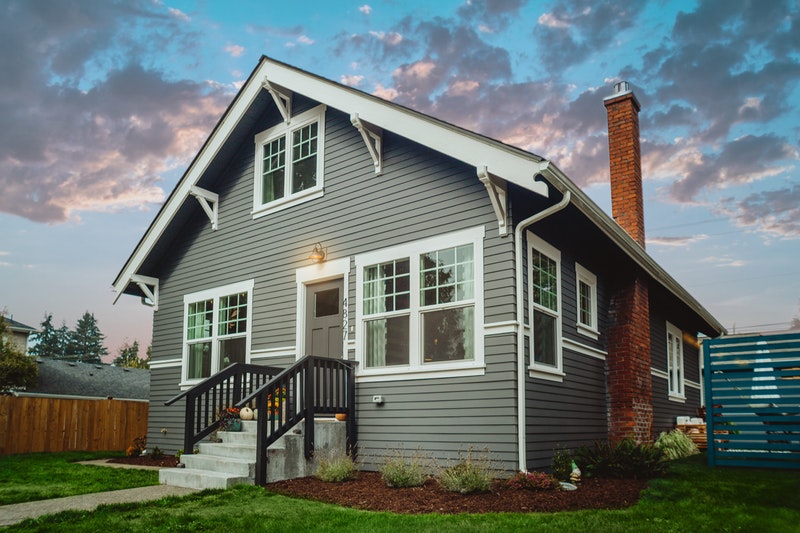The 7 Most Common Types of Windows
- Double-Hung and Single-Hung Windows
- Casement Windows
- Picture Windows
- Bay Windows
- Awning Windows
- Slider Windows
- Transom Windows
With that in mind, let’s look at 7 of the most common kinds of windows.
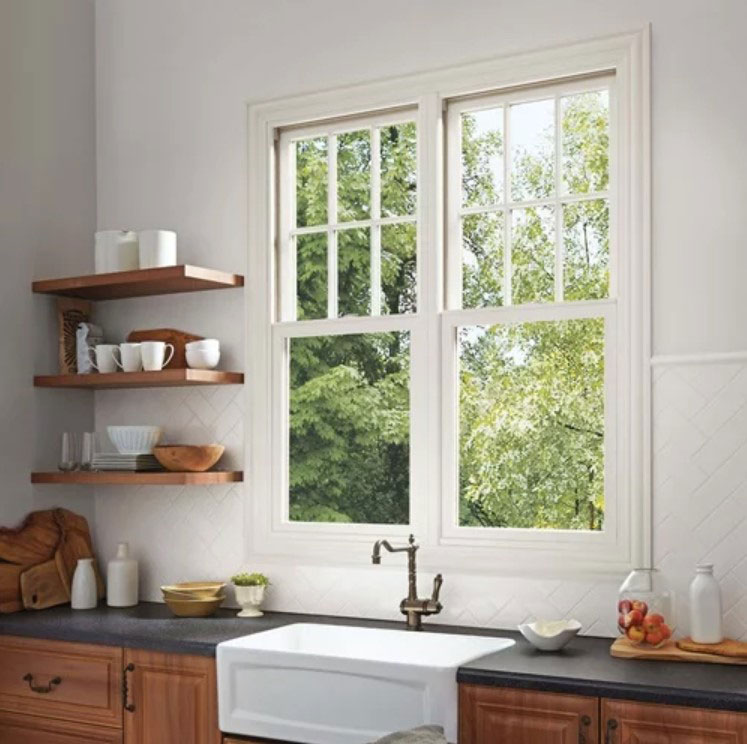
Double-Hung and Single-Hung Windows
Photo Courtesy of Marvin Windows
Double and single-hung windows are what most homeowners think of first when you think about windows for residential builds. This traditional type of window has two sashes, a top and a bottom sash.
- In double-hung windows, both the top and bottom sash slide up and down in the window frame and can open into the home for cleaning.
- In single-hung windows, only the bottom sash slides up and down in the window frame.
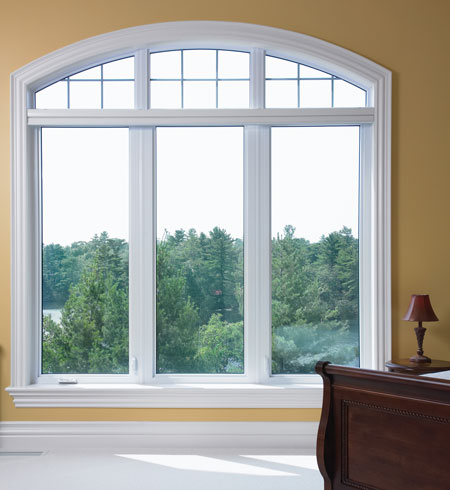
Casement Windows
Photo Courtesy of North Star Windows
Probably the most commonly associated placement for casement windows is over kitchen sinks. These are the windows that you crank open, and that open out from a hinge on the left or right side of the window. Older versions of these windows were a little tough to operate, but newer versions feature improved mechanisms that make them easy to open, and as you can see from the image above, they’re a beautiful, open option that lets in plenty of natural light, while increasing ventilation in your home.

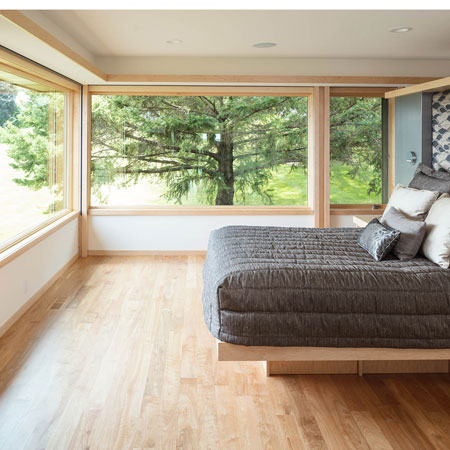
Picture Windows
Photo Courtesy of Andersen Windows
Another popular type of window for residential homes, picture windows really bring the outdoors in. Picture windows are large stationary windows that don’t open or close. You might be most familiar with these as floor-to-ceiling style windows, but a picture window can actually be any window that’s larger than a standard size, and that functions to let in the most natural light possible while offering a clear view of the outdoors.
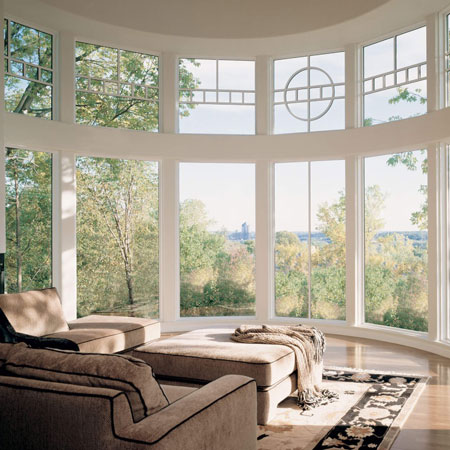
Bay and Bow Windows
Photo Courtesy of Marvin Windows
A bay window, also known as a bow window, has less to do with the physical window itself, and more with the construction of the home. Bay windows are an architectural choice that gives you a bit more interior space, as they protrude out from the house. You might find a window seat or a book nook in a bay window.
Most often, a series of double-hung windows or custom arched-glass windows make up bay windows. The impressive bay window shown here is made up of a series of picture and transom windows, which look great in a living room.
Bay windows are also the perfect choice for a smaller bathroom. Their “bump out” style adds space to that small room and tons of natural light. Need more bathroom window inspiration? This blog on the best windows for your bathroom can help!

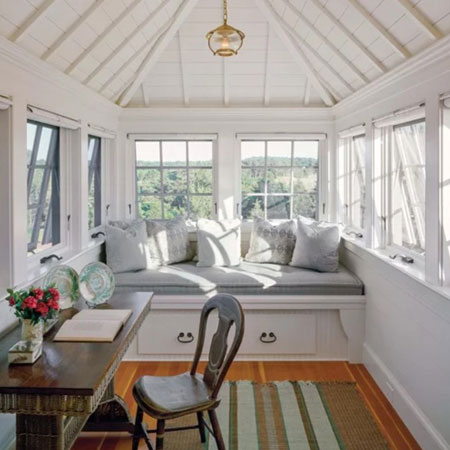
Awning Windows
Photo Courtesy of Marvin Windows
Awning windows are typically installed on top of another window, whether it’s stationary like a large picture window, or operable like a traditional double-hung window. Awning windows are hinged at the top and open up. They function to let in more natural light and offer additional airflow. While they are usually installed above another window, they can also be installed alongside or below another window, or like the windows in the photo — installed on their own in an attic for great ventilation.
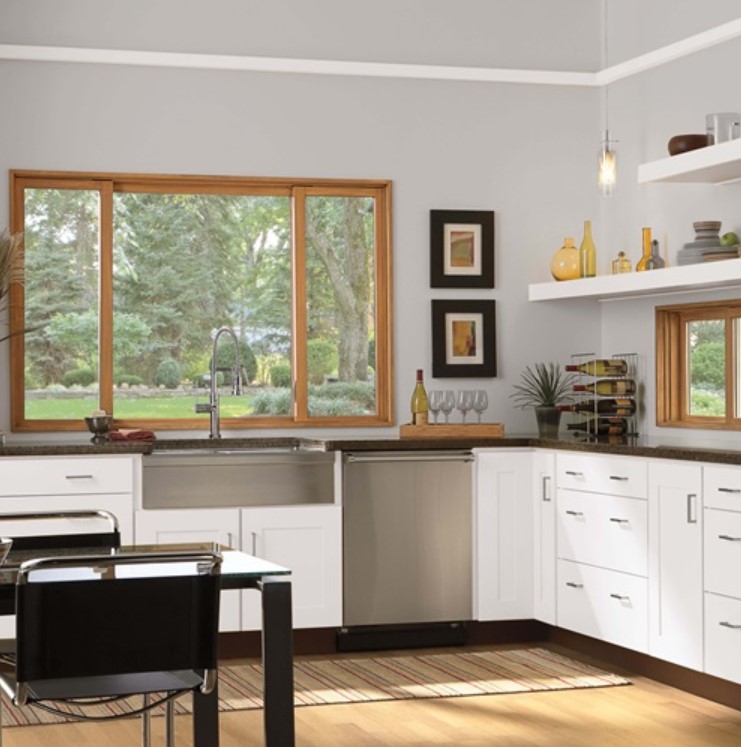
Slider Windows
Photo Courtesy of Marvin Windows
Slider windows are any type of window that opens by sliding to the left or right on a track. You’re probably most familiar with a sliding-door style window, where one side of the double window opens by sliding behind the other window. Slider windows also come in smaller sizes, and are commonly seen in modern and contemporary homes.

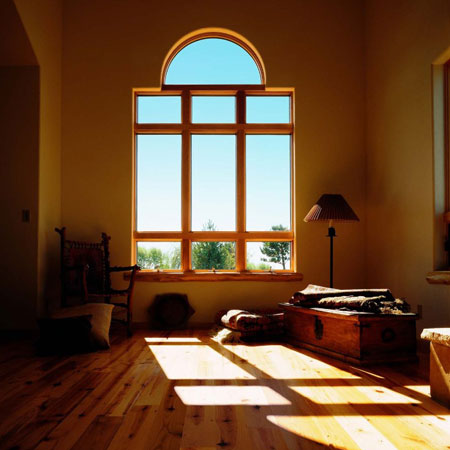
Transom Windows
Photo Courtesy of Andersen Windows
Transom windows are similar to awning windows, though today’s modern models are usually inoperable. Transom windows are always installed above another window or door, with the purpose of letting in additional light. The transom window shown in the image above, the half-circle at the top, is stationary, and primarily exists for architectural appeal and to increase natural light.
Which Window Will You Choose For Your Home?
If you need help finding the perfect window match for your home, let’s talk. Our team is happy to hear your goals and make recommendations based on them. Plus, we back those recommendations with an full inventory of many different window styles from popular manufacturers.
Stop into one of our locations or get in touch online today.

